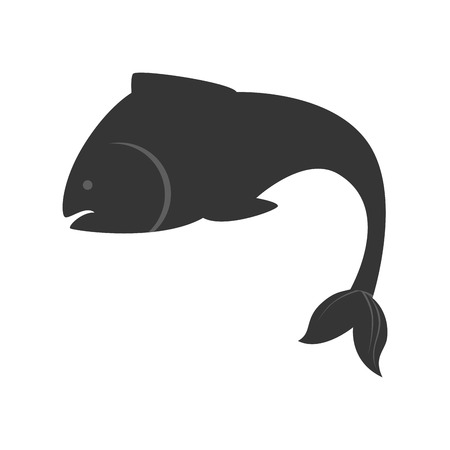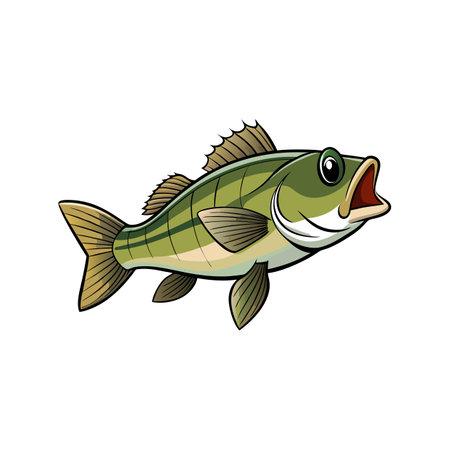Introduction to Salmon Fly Fishing in the UK
Salmon fly fishing holds a cherished place within the angling traditions of the United Kingdom, blending centuries-old heritage with some of the most scenic waterways found anywhere in Europe. From the fast-flowing rivers of Scotland to the gentle runs of England and Wales, salmon fishing offers both challenge and reward for anglers seeking that unforgettable connection between rod and river. While each region boasts its own distinct character, rules, and river systems, it is Scotland that has long been regarded as the spiritual home of salmon fly fishing—a reputation built on legendary rivers, rich biodiversity, and an enduring culture centred around this noble pursuit.
To provide a clear comparison and set the stage for why Scotland stands out among its UK peers, consider this brief overview:
| Region | Main Rivers | Season | Notable Features |
|---|---|---|---|
| Scotland | Spey, Tay, Dee, Tweed | January – November (varies by river) | Historic beats, large salmon runs, famed ghillie tradition |
| England | Tweed (partly), Tyne, Wear | February – October | Diverse access points, strong conservation efforts |
| Wales | Towy, Usk, Teifi | March – October | Lush valleys, smaller but challenging rivers |
| Northern Ireland | Bann, Bush, Mourne | March – October | Less crowded fisheries, unique local traditions |
This snapshot captures just how varied the salmon fly fishing experience can be across the UK. Each destination offers its own blend of landscape, river character, and angling culture. However, as we will explore in detail through this article, there are compelling reasons why Scotland is often considered the crown jewel for those passionate about salmon fly fishing.
Distinctive Features of Scottish Salmon Fishing
When discussing what truly sets Scottish salmon fly fishing apart from other UK destinations, several distinctive characteristics come to the fore. Firstly, the rivers themselves are legendary. From the mighty River Tay and the storied Dee to the Spey and Tweed, these waterways possess a unique blend of size, flow, and clarity that provide an unrivalled challenge for anglers. Many Scottish rivers meander through wild, untamed landscapes—rolling heather-clad hills, dramatic glens, and ancient woodlands—which create a sense of immersion that’s difficult to replicate elsewhere in the UK.
River Character and Landscape
Scotland’s river systems are defined by their natural beauty and diversity. While English and Welsh rivers often pass through farmland or urban settings, Scottish salmon beats frequently offer remote solitude. The following table highlights some key differences:
Feature |
Scotland |
Other UK Destinations |
|---|---|---|
River Scenery |
Wild glens, rugged hills, ancient forests | Mainly pastoral or semi-urban landscapes |
Water Clarity |
Crisp, clear flows fed by upland sources | Often more coloured due to agricultural runoff |
Accessibility |
Remote beats with limited crowds | Easier access but busier waters |
Size & Flow |
Larger rivers with varied pools & riffles | Generally smaller or less variable rivers |
Traditional Techniques and Heritage
The tradition of salmon fly fishing in Scotland is deeply rooted. Classic techniques such as Spey casting originated here—a style perfectly suited to broad Scottish rivers bordered by overgrown banks where a back-cast isn’t practical. The use of distinctive local flies like the Ally’s Shrimp or Thunder & Lightning reflects both heritage and adaptation to native conditions. Compared to other parts of the UK, there’s a tangible reverence for etiquette on the water, from respectful bank rotation to understated camaraderie among rods.
A Living Tradition Unmatched Elsewhere in the UK
This combination of rugged landscape, storied waters, and time-honoured practices is what makes Scottish salmon fly fishing exceptional. It’s not simply about catching fish—it’s about experiencing a living tradition in a setting where nature feels raw and history runs deep. For those who have fished elsewhere in Britain, Scotland’s distinctive features offer a compelling reason to return season after season.

3. Comparing Key UK Salmon Fishing Destinations
When weighing up salmon fly fishing opportunities across the UK, Scotland’s rivers and lochs consistently rise above those in England, Wales, and Northern Ireland. The contrasts are most pronounced when you look closely at access, fish stocks, and the angling culture unique to each region.
Access to Waters
Scotland’s Right to Roam and the historical openness of riverbank access stand in stark contrast to the often restrictive, club-based waters found further south and west. In Scotland, visiting anglers can frequently secure day tickets or even guided beats on world-famous rivers like the Spey or Dee without lengthy waiting lists or exclusive syndicates. By comparison, many English chalk streams and Welsh beats operate on private leases with limited public availability.
| Region | Ease of Access | Permit Availability |
|---|---|---|
| Scotland | High (Right to Roam) | Day tickets, open beats widely available |
| England | Moderate-Low (More private/club waters) | Syndicate/club permits, fewer open days |
| Wales | Moderate (Some public stretches) | Club-controlled sections, mixed access |
| Northern Ireland | Moderate (State-managed & private) | Licence plus varying permits required |
Fish Stocks & River Health
The legendary runs of Scottish Atlantic salmon have long set the benchmark for British fly fishing. While all UK nations face conservation challenges, Scotland’s larger catchments—such as the Tay and Tweed—still support healthy migratory populations thanks to ongoing habitat work and sensitive management. In contrast, many English rivers have seen declining numbers due to urbanisation and historic weir construction. Welsh rivers like the Towy remain prized but are more vulnerable to spate conditions, while Northern Irish fisheries are often smaller and less consistent in returns.
| Region | Main Salmon Rivers | Current Fish Stocks* |
|---|---|---|
| Scotland | Tay, Tweed, Spey, Dee | Strong; largest average UK catches |
| England | Tyne, Eden, Hampshire Avon | Poor-Moderate; some recovery efforts ongoing |
| Wales | Towy, Usk, Wye | Variable; dependent on river conditions/spates |
| Northern Ireland | Bann, Bush, Foyle system | Limited but improving through restocking/conservation |
| *Based on Environment Agency & Fisheries reports 2022-2023. | ||
The Unique Angling Culture of Scotland vs Other Regions
The Scottish tradition is deeply entwined with local communities—a blend of ghillie-guided expertise, traditional hospitality (a dram by the fire is never far away), and a relaxed yet passionate approach to etiquette. While English and Welsh beats may offer exclusivity or refined chalkstream technique, they often lack the same sense of heritage stewardship you’ll find along a Highland riverbank. In Northern Ireland, friendly local clubs prevail but without Scotland’s global reputation or sheer diversity of water.
Summary Table: Core Differences in UK Salmon Fly Fishing Destinations
| Scotland | England/Wales/N.Ireland | |
|---|---|---|
| Public Access Tradition? | Yes – Right to Roam & open beats common. | No – More private/club-only waters. |
| Salmon Stock Levels? | Largest stocks in Britain; best prospects for trophy fish. | Lower/more variable; some rivers face significant decline. |
| Cultural Experience? | Tightly woven into local life; strong heritage & hospitality. | Syndicate/club focus; less community integration. |
This combination of open access, robust fish stocks (by UK standards), and a welcoming angling culture makes Scotland truly stand apart for both seasoned rods and newcomers alike.
4. The Scottish River Experience: From Spey to Dee
There’s something truly magical about casting a line on Scotland’s iconic salmon rivers. Unlike many other UK destinations, the likes of the River Spey and River Dee offer an unrivalled combination of heritage, scenery, and angling challenge. Seasoned local anglers often speak of the “Spey cast” as a rite of passage—more than just a technique, it’s an initiation into Scotland’s rich fly fishing tradition. The riverbanks here are steeped in history, with ancient estates and whisky distilleries providing a backdrop you simply won’t find elsewhere.
What really sets these rivers apart is their character. The Spey is renowned for its fast-flowing waters and expansive pools, demanding skill and precision. Meanwhile, the Dee, winding through Royal Deeside, offers crystal-clear runs and is famous for its spring salmon—often considered among the most challenging and rewarding to catch in Britain.
Key Features of Scotland’s Famous Rivers
| River | Main Characteristics | Unique Experience |
|---|---|---|
| Spey | Wide, fast-flowing, classic pools | The birthplace of the Spey cast; stunning Highland scenery |
| Dee | Clear water, varied beats | Superb spring salmon; historic Royal connections |
Insights from Local Anglers
Veteran gillies along the Spey often recall days when the mist hangs low over the water at dawn—a time when patience and local knowledge pay dividends. As one seasoned Dee angler put it, “You don’t just fish these rivers; you become part of their story.” This sense of belonging and respect for tradition is woven into every outing, making each trip to Scotland’s rivers unforgettable.
The Atmosphere: More Than Just Fishing
It’s not merely about landing a fish. The camaraderie at the riverside huts, tales shared over a dram of single malt, and the ever-changing Scottish weather all contribute to an experience that goes far beyond what many English or Welsh rivers can offer. In truth, if you’re looking for fly fishing with soul—and perhaps a touch of adventure—Scotland’s salmon rivers are in a class of their own.
5. Tradition, Hospitality, and Local Culture
One of the most captivating aspects that set Scottish salmon fly fishing apart from other UK destinations is the deep-rooted tradition and warmth of Scottish hospitality. When anglers venture to Scotland, they are welcomed not just as visitors, but often as temporary members of a community steeped in centuries-old fishing heritage. This sense of belonging is fostered by the renowned friendliness found in both rural Highland villages and established fishing towns.
The Role of Fishing Lodges
Scottish fishing lodges offer more than just a place to rest your head; they are living testaments to the region’s angling history. Many lodges have been family-run for generations, their walls lined with photographs and memorabilia chronicling epic catches and legendary ghillies. Guests can expect hearty local fare, warming firesides, and the ever-present opportunity to swap stories over a dram of whisky after a day on the river.
Comparing Hospitality Across the UK
| Region | Hospitality Style | Unique Traditions |
|---|---|---|
| Scotland | Warm, familial, story-driven | Ghillie-guided outings, riverside whisky tastings, clan gatherings |
| England | Formal, service-oriented | Afternoon teas at country estates, etiquette-focused experiences |
| Wales | Community-centric, rustic charm | Bilingual banter, local music evenings in pubs |
| Northern Ireland | Laid-back, welcoming spirit | Cultural festivals intertwined with angling events |
Cultural Heritage Tied to Salmon Angling
In Scotland, salmon fishing is not simply a pastime—it is woven into the national identity. From ancient river rights passed down through generations to iconic annual celebrations like Spey Casting festivals, every cast pays homage to a lineage of skill and respect for nature. The presence of ghillies—local river guides—further reinforces this heritage; their expertise and stories enrich the experience beyond what any guidebook can offer. It’s these layers of tradition and hospitality that make Scottish salmon fly fishing uniquely immersive compared to other UK destinations.
6. Challenges and Conservation Efforts
When comparing Scottish salmon fly fishing to other UK destinations, it’s impossible to ignore the unique challenges that both Scotland and the rest of the UK face regarding salmon populations. Overfishing, habitat loss, water pollution, and climate change have all taken their toll on wild salmon numbers across Britain. However, Scotland has adopted a particularly robust and forward-thinking approach to conservation—one that stands as a model for responsible angling.
Key Conservation Measures: Scotland vs. Rest of the UK
| Conservation Aspect | Scotland | Other UK Destinations |
|---|---|---|
| Catch & Release Policy | Widely enforced, with many rivers mandating 100% release during parts or all of the season. | Varies by river; some areas still permit limited take. |
| Habitat Restoration | Significant investment in riverbank replanting, removal of barriers, and spawning ground improvement. | Efforts ongoing but often less comprehensive and more fragmented. |
| Seasonal River Closures | Strictly implemented to protect spawning fish, especially in sensitive stretches. | Implemented in select areas but with less uniformity. |
| Monitoring & Data Collection | Advanced tagging, counting, and scientific studies supported by major trusts. | Present but not as coordinated or well-funded. |
| Angler Education | Compulsory catch-and-release workshops in many beats; strong culture of stewardship. | Educational resources available but less emphasis on mandatory training. |
The Responsible Angler’s Experience
The upshot of these conservation efforts is a distinctive experience for anglers who value sustainability. In Scotland, every cast comes with a sense of stewardship—anglers are actively participating in the preservation of iconic wild salmon runs. The clear regulations, visible restoration projects, and community-driven ethos foster a deep respect for the environment. Contrast this with some English or Welsh fisheries where policies might be less stringent or awareness campaigns less visible; while the fishing can still be excellent, it often lacks the same immersive commitment to conservation seen north of the border.
A Culture of Conservation: Why It Matters
This culture doesn’t just safeguard salmon for future generations—it shapes the entire atmosphere on Scotland’s rivers. Guides are knowledgeable about local ecology, ghillies encourage best practices, and even visiting anglers quickly absorb a sense of duty. For those who see fly fishing as more than sport—a means to connect with wild places and contribute to their survival—Scotland’s approach represents a gold standard worth emulating throughout the UK.
7. Conclusion: Why Scotland Stands Apart
After exploring the various facets of salmon fly fishing across the UK, it is clear that Scotland holds a unique and enduring allure for anglers. From the legendary River Spey to the tranquil beauty of the Tweed and Dee, Scotland offers not just world-class fishing but an immersive cultural experience deeply rooted in its landscape and traditions. The following table succinctly outlines what sets Scotland apart compared to other renowned UK destinations:
| Feature | Scotland | Other UK Destinations |
|---|---|---|
| River Quality & Variety | Wide range of iconic rivers with prolific runs | Limited number of major rivers, less diversity |
| Heritage & Tradition | Rich history, global reputation for fly fishing culture | Less historical significance in salmon fishing |
| Scenic Environment | Breathtaking Highland landscapes, remote beats | Mainly lowland or urban-adjacent rivers |
| Access & Infrastructure | Well-established fisheries, knowledgeable ghillies | Sporadic facilities, fewer local experts |
Practical Advice for Prospective Visitors
- Plan Ahead: Prime beats are often booked well in advance, especially during peak season (June-September). Early planning secures better locations and guides.
- Engage Local Expertise: Hiring a Scottish ghillie not only increases your chances of success but also enriches your understanding of local etiquette and techniques.
- Embrace the Full Experience: Take time to explore nearby villages, sample traditional fare such as smoked salmon and haggis, and enjoy the warm hospitality found in Scottish lodges and inns.
Ultimately, Scotland’s unrivalled combination of wild beauty, angling heritage, and practical accessibility makes it the premier destination for salmon fly fishing in the UK. Whether you’re seeking your first Atlantic salmon or returning for another adventure, Scotland stands ready to offer a memorable and truly authentic experience.


